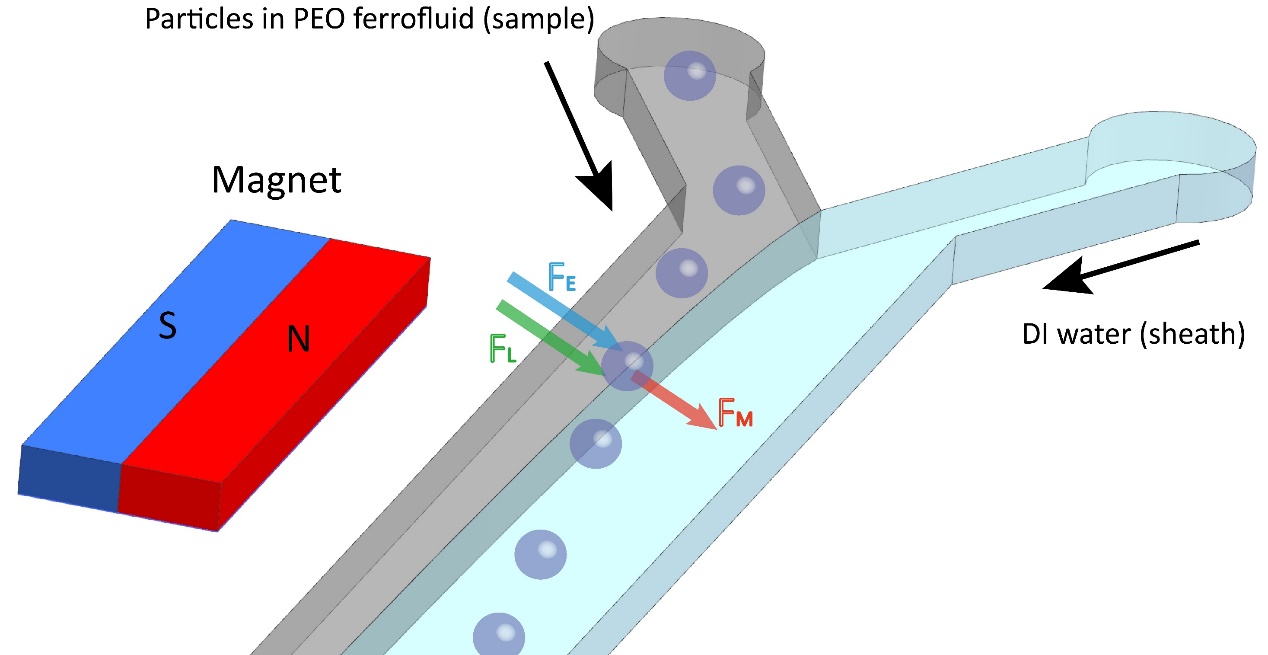On February 12, 2024, the research team led by Dr. Sheng Yan from the Advanced Institute of Shenzhen University published a paper titled "Magnetophoresis-Enhanced Elasto-Inertial Migration of Microparticles and Cells in Microfluidics" in Analytical Chemistry. Dr. Sheng Yan, a researcher at the Advanced Institute of Shenzhen University, is the first author of the paper, with Dr. Jun Zhang from Griffith University and Dr. Nam-Trung Nguyen as corresponding authors. Liu Yong, a master's student at Shenzhen University, participated in this work. This achievement was supported by National Natural Science Foundation of China, Zhujiang Pearl River Talent Program, Guangdong Basic and Applied Basic Research Foundation and Shenzhen University 2035 Program for Excellent Research.
Microfluidic technology for manipulating particles and cells has broad application prospects in biomedicine and healthcare. Microfluidic technologies can be classified into active (e.g., electrokinetic, magnetic, acoustic, and thermal) and passive (e.g., inertial and viscoelastic) techniques based on the source of manipulation forces. However, relying solely on a single active or passive manipulation technique may not always meet the requirements. Combining multiple physical principles emerges as a promising strategy to enhance the flexibility and multifunctionality of these technologies.
In this work,PEO-based ferrofluid and DI water were used as sample and sheath fluids, respectively, to form a coflow configuration. First, we investigated the influence of the flow rate ratio and total flow rate of sample/sheath on particle migration. Subsequently, we tested different combinations of sample/sheath (ferrofluid/ DI water, PEO-based ferrofluid and DI water, ferrofluid / PEO, PEO-based ferrofluid /PEO). Finally, we applied this physically coupled method to cell migration and solution exchange.

Figure 1 Under the influence of magnetic force, inertial force, and elastic force, the migration of cells in the coflow configuration of PEO-based ferrofluid /DI water is depicted.
Link:https://pubs.acs.org/doi/10.1021/acs.analchem.3c05803


